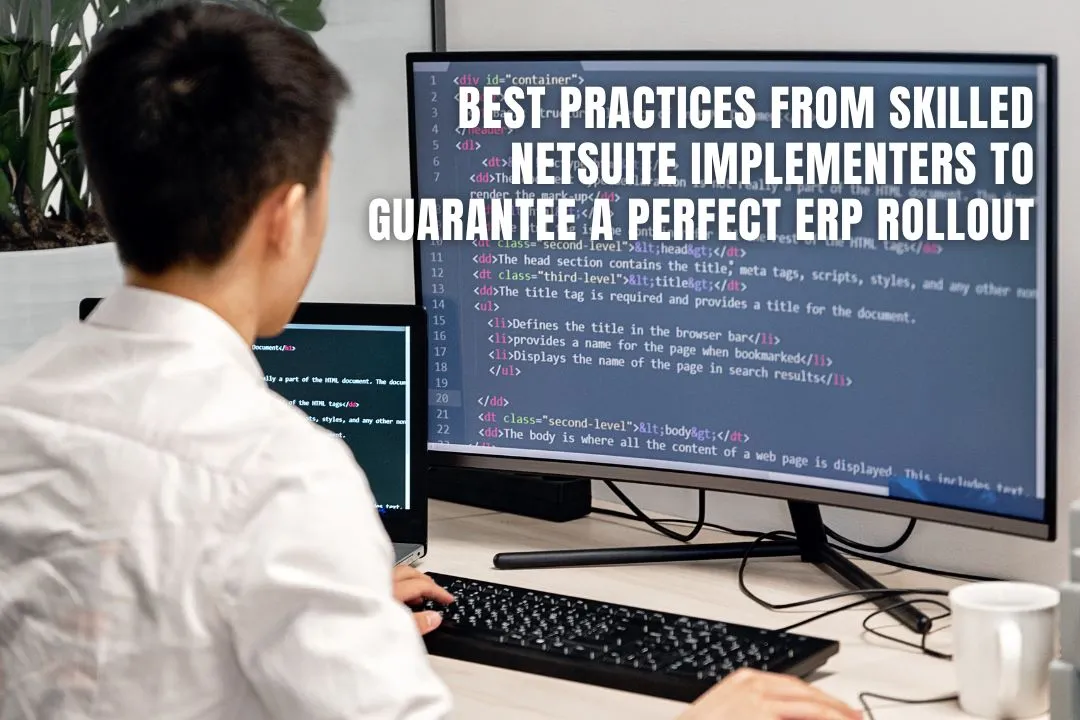
Implementing a new ERP system can be both thrilling and daunting. Although it's not always easy to get there, NetSuite is a significant step toward efficiency, scalability, and real-time insights for many businesses. Obstacles such as rigid methodologies, poor communication, and unclear expectations are common in ERP implementations.
The good news? You can stay clear of those traps. You will be much better prepared to overcome obstacles and position your team for long-term success if you adhere to the best practices from experienced NetSuite implementers. To save you from having to learn the hard way, this guide compiles useful advice from implementation experts who have done it all before.
Let’s start with a reality check. More than half of ERP implementations encounter delays or budget issues, according to a Forbes Technology Council report (Forbes). The reasons are often preventable:
Early detection of these warning signs can help you avoid them completely.
It’s tempting to dive straight into system setup, but great implementers pause to ask deeper questions. What are the actual business issues that NetSuite must resolve? In six months, what would success look like?
They then establish SMART objectives, which stand for Specific, Measurable, Achievable, Relevant, and Time-bound.
Example:
"Within the first quarter following go-live, reduce manual invoice processing by 80%."
These objectives guarantee that teams remain in sync and shape the entire project.
You have three main paths:
ERP Peers backs partner-led approaches for most growing businesses because they offer the right balance of structure and personalization.
NetSuite touches every corner of your organization. That’s why experienced implementers involve cross-functional leaders early:
Team alignment isn’t optional—it’s your foundation.
Instead of guessing what the solution should be, top teams go deep in discovery:
Centium stresses that skipping this phase often leads to misalignment, scope creep, or major rework later.
The days of waterfall ERP projects are fading. Elite NetSuite implementers lean into Agile; a flexible, sprint-based approach that promotes collaboration and iteration.
This is how it usually appears:
"Don’t cancel sprints, adapt them. Agile success depends on maintaining momentum." - Excelym
This method keeps everyone engaged and ready to pivot when real-world needs shift.
Data migration is one of the most underestimated (and risky) parts of ERP projects. Here’s the simplified framework seasoned implementers use:
Allow plenty of time. And don’t cut corners here, your reporting and automation depend on it.
The most powerful ERP in the world is useless if your people don’t know how to use it. Human-centered implementers invest in:
A 2024 study from Entrepreneur found that structured training improved ERP adoption rates by nearly 30% (Entrepreneur).
It’s tempting to treat go-live like the finish line. But experienced NetSuite partners know it’s only the halfway point.
Their post-launch playbook includes:
To capture what you might overlook in your daily operations, Threadgold Consulting advises setting up regular checkpoints.
It takes strategy, people, and procedures in addition to technology to implement NetSuite ERP successfully. Clear objectives, constant communication, and the adaptability to change as your company does are the cornerstones of the most successful implementations.
Using the best practices from experienced NetSuite implementers can give you a significant edge in attaining long-term success, regardless of whether you're implementing NetSuite for the first time or attempting to fix a failed implementation.
Important Takeaways:
In the end, the secret to success is your capacity for meticulous planning, iterative execution, and user support throughout the entire process. With the correct strategy, you can fully utilize NetSuite's potential and propel revolutionary company expansion.
Would you prefer a hybrid roadmap that blends Agile and structured approaches, or a customised NetSuite readiness checklist? Tell me, and I'll be glad to help.
About the Author
Vince Louie Daniot is a seasoned ERP content strategist and SEO specialist. With years of experience researching and writing about NetSuite, ERP implementations, and digital transformation, he helps SaaS brands and consultancies turn complex systems into clear business value. When he's not deep-diving into ERP best practices, Vince is crafting content that ranks, and converts.